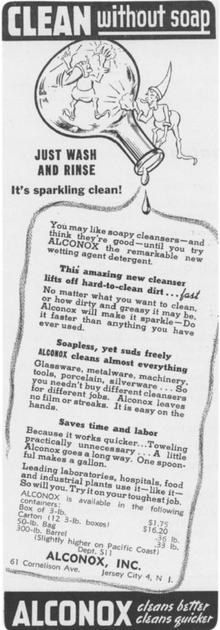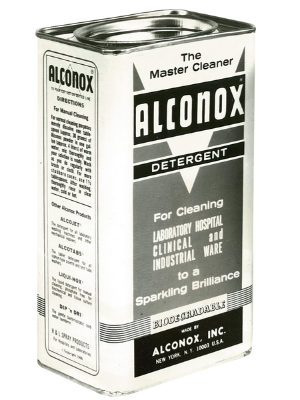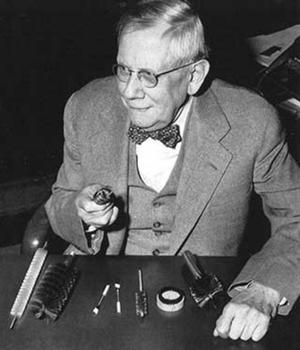Around this time of year in my late teens and early twenties, about a thousand years ago, I’d head back to my family’s home on the east coast.
Friends going to college all over the country would come back after exams were done to live rent-free with family over the summer, catch up with friends, and pretend we’d all become enlightened in those 9-or-so months away from home.
Maybe the most quintessential part of this whole ceremony was the summer job.
Some of my friends worked on golf courses, getting exercise and fresh air and sun for those 10 weeks. Some worked for the local municipality as lifeguards or for nearby summer camps as counselors (where, they told me, it was nothing like Meatballs or Friday the 13th).
Mine was the worst. A family friend owned a busy, local highway-side motel. The kind that offers rooms at a very low price for people on the move.
And they were very frugal. So rather than buying the kind of heavy-duty disinfecting cleaners you’d expect to find in any motel or hotel, they had me alchemy up our own. We code-named it Clean-O-Rama.
It was vinegar, water, and a healthy splash of peppermint oil “so it always smells like Christmas.”
The things I saw, tried to clean, and left as good enough still haunt me to this day.
My parents always said they were doing me a favor, giving me the job every summer and paying me under the table. I think now maybe I was the only one that would do the job, and I might have been doing them a favor.
What I learned over those summers stayed with me forever. The cleaner you use really, really matters, and you can’t clean much with a disintegrating rag.
So, in honor of all the students on their way home to those summer jobs and the students staying on campus to work or volunteer in the lab all summer, this June edition of the SECO newsletter is all about gettin’ glassware clean.
Clean without soap!
Archaeologists have found evidence of soap from as long as 5,000 years ago.
When Rome fell in 467, the use of soap fell too. And for about a thousand years after that, people were generally grimier and sicker than they had been.

Centuries passed and soap came back into fashion. But World War I caused a giant hiccup in global cleanliness. There was a shortage of the animal and vegetable fats and oils used in industrial soapmaking.
So scientists came to the rescue!
Getting creative with the raw materials at their disposal, chemists synthesized cleaning agents with similar, dare we say superior qualities. And today we know those products as detergents.
Something neat those chemists discovered was:
Detergents work better with hard water than soap.
This matters particularly in the lab industry because the residue left behind in reusable glassware could impact the next use of that glassware.
A few years later, chemist Louis Zisman discovered a wetting agent that was particularly adept at cleaning glassware without leaving a residue behind, and Alconox was born.
What a coincidence that SECO was born around the same time. And we’ve been working side-by-side ever since.
Your lab’s favorite Alconox detergents are available with your special pricing and in stock in the northeast right now at the link below.
There is a best way to clean your glassware
But that not just because better detergents are available now. It’s also because the science of cleaning science stuff is more of a science now.
Say that five times fast.

Successful cleaning is determined by nine factors, the BATHOCARD factors.
Before - what you do prior to cleaning, such as soaking.
Agitation - the type of movement used to enhance cleaning (like a scrub brush from the next section below or your ultrasonic cleaner).
Time - the duration of your cleaning cycle.
Heat - as a general rule, every 10C increase in your cleaning temperature doubles your cleaning speed.
Orientation - whatever you’re cleaning needs to be oriented for maximum exposure to the cleaning solution. Microscope slides dropped loosely into the bottom of a basin will sit face down, and that face will be less clean than the exposed side. Place them in a rack and all sides are exposed equally.
Cleaner - the chemistry of the cleaning solution needs to be appropriate for the residue.
After - post cleaning handling with gloves.
Rinse - at least three times, and as many as 12.
Drying - leave it to dry on a rack. Ideally, your lab is outfitted with wall-mounting drying racks that don’t take up surface space and allow you to configure the pegs to your glassware. But budget racks like this one are also fine for some labs.
Make drying easier with this drying rack
Don’t brush off the rest of the cleaning workflow
It seems like there’s something about being a cleaning product manufacturer that imparts great longevity.
122 years ago, Victor H. Miller was making wire racks and displays for picture postcards that were sold in his confectionery store in Cleveland.
A customer who was a representative of the Osborn Manufacturing Company watched his dexterity with wire and offered him a contract to make percolator brushes.
So that’s what the Mill-Rose Company did in 1919. And that’s what it’s done, through 4 generations of the Miller family, for all the years since.
Choose the right brushes (or get help from us doing it) for your tubes, bottles, cylinders, beakers, jars, flasks, pipettes, and spend less time scrubbing at the end of the day.

Lab glassware washers don’t quite have the storied history of the brushes or detergent above.
But the convenience of a new Labconco glassware washer is a story for today.
There was a time when narrow-neck glassware like volumetric flasks had no business in a glassware washer. Now, direct-injection spindles deliver detergent and purified water all the way to the bottom of your deepest volumetric flask.
You can install accessories and pre-configure wash cycles based on your most common lab applications.
If you know your operators do X operation every wednesday, and that application requires 4 volumetric flasks, 12 test tubes, 10 pipettes, 3 graduated cylinders, and your morning coffee mug (kidding!) you can pre-program exactly the settings and configure the washer accessories to do it super fast.
Labconco glassware washers save your operators a ton of time every day.
Contact us here for an easy quote
You like to move it move it
Why did the DJ get fired from the chemistry lab?
He kept dropping the base.
*Groan*
We’re actually thinking about moving your glassware, not your money maker.
And you could definitely use that glassware to work on your hobby and real passion as a birthday party juggler. But your colleagues probably wouldn’t appreciate that.
So, instead, load up your glassware before and after washing with a Labconco glassware cart that has way more value than you really notice.
It keeps you from tracking a line of solvent droplets across the lab with the plastic drip pan that lasts forever. It stays put, because two two locks actually hold it in place (one-lock models inevitably glide out of place). And it allows you to have awesome lab-cart races after hours with its maximum weight of 400 lbs.
Ask us for a quick quote on yours here
Can’t find what you need on our website? We stock thousands of SKUs that aren’t available online. Get in touch with our team for preferred pricing on everything you need.